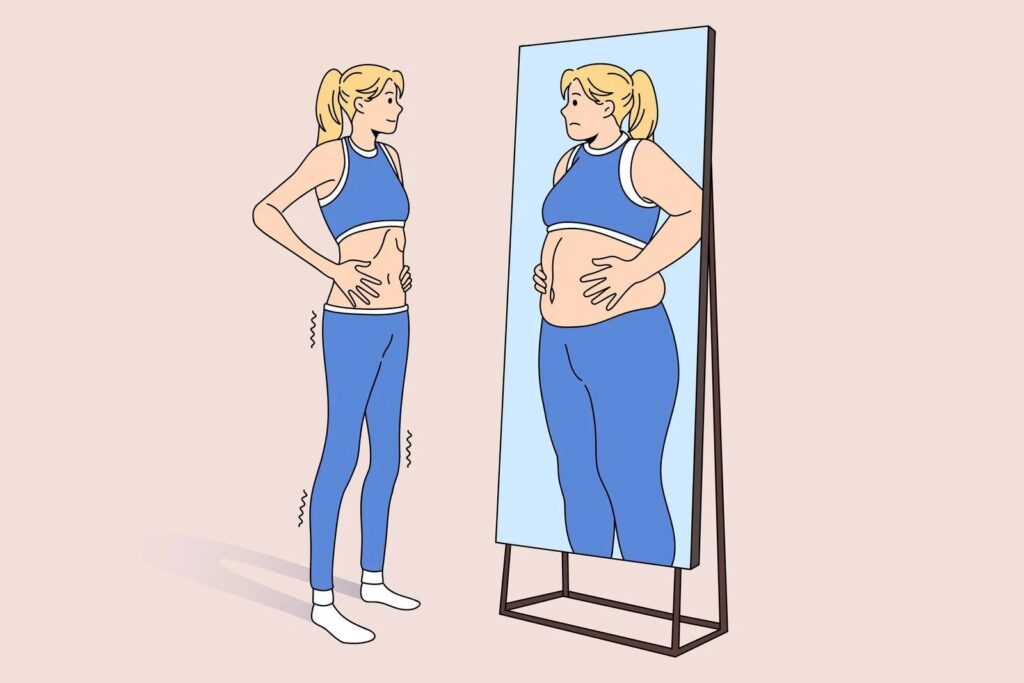Understanding Body Dysmorphic Disorder: Classification, Treatment, and Clinical Insight

Body Dysmorphic Disorder (BDD) is formally classified in the Diagnostic and Statistical Manual of Mental Disorders, Fifth Edition (DSM-5) under the category of Obsessive-Compulsive and Related Disorders (American Psychiatric Association, 2013). It is characterised by a preoccupation with one or more perceived flaws or defects in physical appearance that are not observable or appear slight to others. This preoccupation leads to repetitive behaviours or mental acts—such as mirror checking, excessive grooming, or seeking reassurance—that are difficult to control and often distressing.
BDD shares several clinical features with anorexia nervosa, most notably the obsessive focus on body image and distorted self-perception. However, whereas anorexia nervosa is typically centred on body weight and eating behaviour, BDD often focuses on specific body parts, such as the nose, skin, or hair. Both disorders may co-occur and are associated with high levels of comorbidity, particularly anxiety, depression, and obsessive-compulsive symptoms (Phillips, 2005). Recognising the overlap between these disorders is essential in developing comprehensive treatment plans tailored to the individual’s needs.
Multi-Modal Treatment Approach
Due to the complex psychological underpinnings of BDD, a multi-modal treatment approach often yields the best outcomes. Psychodynamically-oriented psychotherapy helps individuals explore early developmental experiences and unconscious conflicts that may have contributed to their negative body image. This modality can be especially useful for clients with long-standing emotional distress or unresolved relational issues.
Alongside this, cognitive-behavioural therapy (CBT)—specifically exposure and response prevention (ERP)—has been shown to be highly effective in treating BDD. CBT helps individuals challenge distorted beliefs about their appearance and reduce compulsive behaviours through graded exposure to feared situations. Clients are also encouraged to complete structured homework tasks, which reinforce skills learned in therapy and promote behavioural change in everyday life (Veale, 2004).
Hypnotherapy, when integrated appropriately into a broader psychotherapeutic framework, can provide additional benefit. Hypnotic interventions may include ego-strengthening, relaxation techniques, and imagery designed to reduce anxiety and improve self-esteem. In a paper published in the Australian Journal of Clinical and Experimental Hypnosis, Kraft and Kraft (2009) demonstrated how hypnosis, when used alongside behavioural and psychodynamic techniques, could be particularly effective in treating clients with body image issues, including those with eating disorders and BDD.
Clinical Application: Dr David Kraft, PhD
One practitioner who has championed the integrative treatment of BDD is Dr David Kraft, PhD, a psychotherapist and hypnotherapist based in London. Dr Kraft is known for his holistic approach, combining elements of behaviour therapy, psychodynamic work, and clinical hypnosis to treat a range of anxiety and body image-related disorders. His clinical method is tailored to each individual, with a strong emphasis on building trust and understanding the client’s personal narrative.
Dr Kraft practices at two consulting locations in London:
10 Harley Street, London, W1G 9PF
70 Cosmopolitan Court, 67 Main Avenue, Enfield, EN1 1GD
He is available for appointments and enquiries at 07946 579645.
References
American Psychiatric Association. (2013). Diagnostic and statistical manual of mental disorders (5th ed.). Arlington, VA: American Psychiatric Publishing.
Kraft, D., & Kraft, T. (2009). The place of hypnosis in psychiatry, Part 3: The application to the treatment of eating disorders. Australian Journal of Clinical and Experimental Hypnosis, 37(1), 1–20.
Phillips, K. A. (2005). The broken mirror: Understanding and treating Body Dysmorphic disorder (2nd ed.). New York, NY: Oxford University Press.
Veale, D. (2004). Body dysmorphic disorder. Postgraduate Medical Journal, 80 (940), 67-71.


